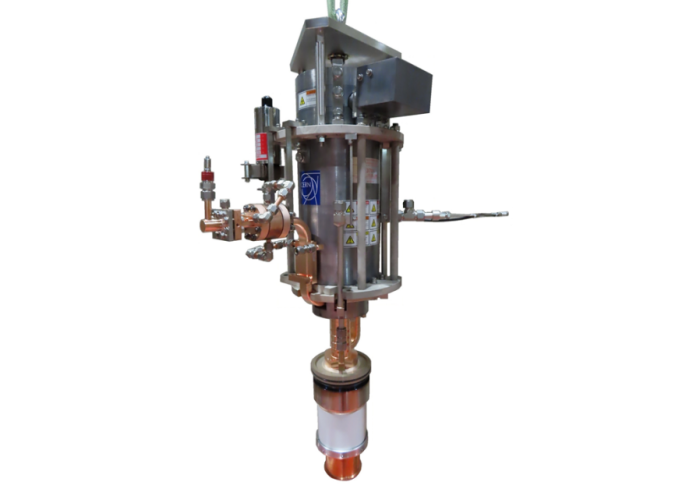Cockcroft staff at Lancaster University have been involved in the development of a high efficiency klystron demonstrator at Canon Electron Tubes and Devices (ETD) and CERN. Klystrons provide the high power RF used to power the acceleration of charged particles in most high power accelerators. However for modern high energy physics machines the energy required can be ten’s of TWhr over a machines lifetime. Typically klystron efficiencies are only 40-45% and hence more than twice the electrical power is drawn from the supply than is needed for the accelerator.
In 2013 the development of high-efficiency klystrons started at CERN within the Compact Linear Collider study as a means to reduce the global energy consumed by the proposed collider. A small team of five people at CERN and Lancaster University, led by Igor Syratchev at CERN, developed accurate computer tools for klystron simulations and in-depth analysis of the beam dynamics, and used them to evaluate effects that limit klystron efficiency. Finally, the team proposed novel technological solutions (including new bunching methods and higher order harmonic cavities) that can improve klystron efficiency by 10–30% compared to commercial analogues.

The first commercial prototype of a high-efficiency 8 MW X-band klystron developed at CERN was built and tested by Canon Electron Tubes and Devices in July this year. Delivering an expected power level with an efficiency of 53.3% measured at their factory in Japan, it is the first demonstration of the technological solution developed at CERN that showed an efficiency increase of more than 10% compared to commercially available devices. In terms of RF power production, this translates to an overall increase of 25% using the same wall-plug power as the model currently working at CERN’s X-band facility. Later this year the klystron will arrive at CERN and replace Canon ETD’s conventional 6 MW tube.
The success of this demonstrator has significant impact on range of klystrons being designed at CERN, with Cockcroft simulation support, for HL-LHC, CLIC, FCC-ee and a future muon collider as well as potentially for light sources such as a future UK FEL. The next project in progress aims to fabricate a high-efficiency version of the LHC klystron, which, if successful, could be used in the HL-LHC.
